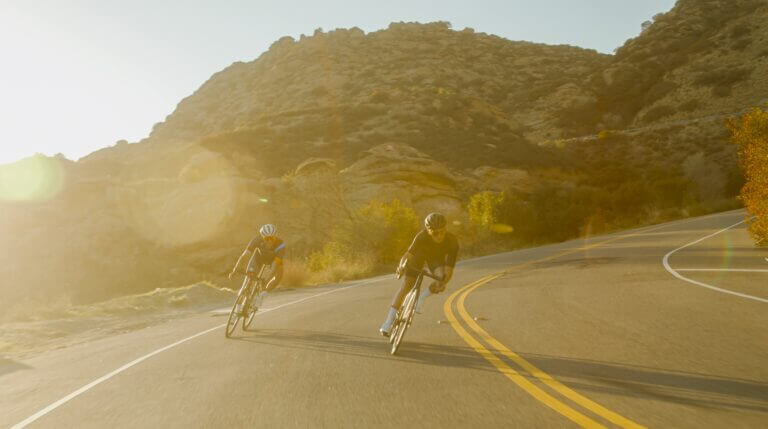When you first start cycling, the thought of flying down a hill can be nerve-wracking. But here’s the reassuring truth: with the right skills and techniques, there’s really nothing to be afraid of.
We all begin with those wobbly feelings, even the pros. Descending on a road bike is like embarking on a thrilling roller coaster ride, and just like mastering a roller coaster, it’s all about understanding the twists, turns, and techniques that come with it.
So, let’s dive into the journey of becoming a confident downhill cyclist and embrace the exhilarating world of descents!
1. Prepare Yourself and Your Bike
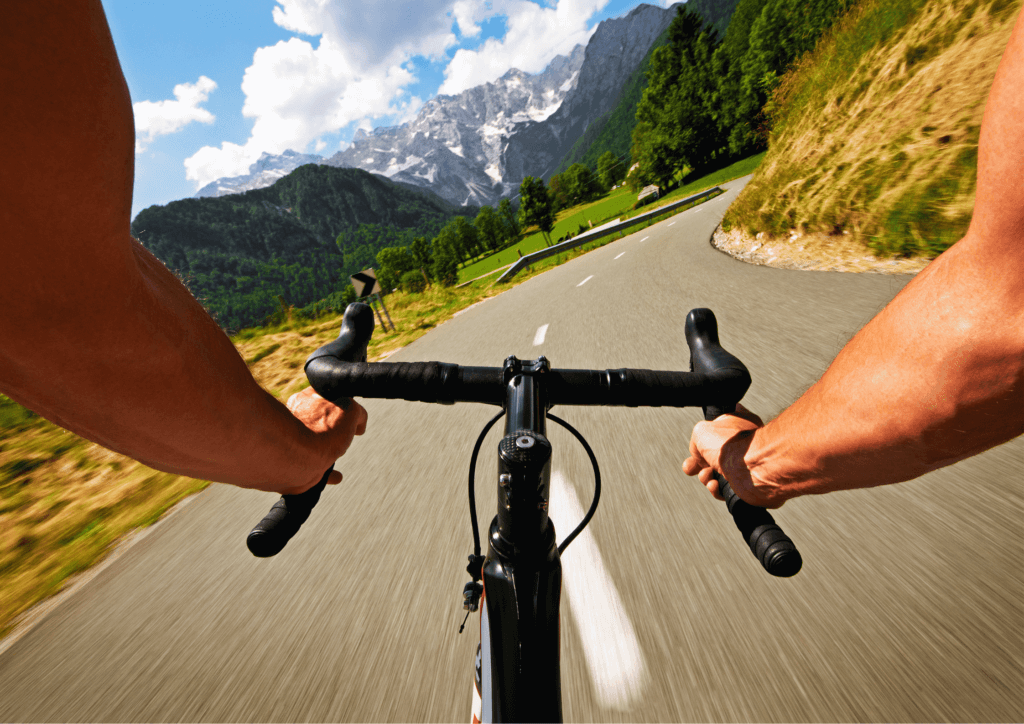
Before you start your downhill adventure, it’s super important to get both you and your bike ready. Take a moment to make sure everything is in tip-top shape.
Give your bike a good once-over. Check the brakes to make sure they’re working well – they’re your stopping power. Look at your tire pressure; having the right amount helps with control and grip. And don’t forget your bike’s general health – make sure everything is tightened up and working smoothly.
Now, let’s talk about you. Safety comes first, so put on your protective gear. A helmet that fits just right, gloves to keep your hands comfy and protected, and clothes that make you feel good and ready to ride.
All of this gear isn’t just about looks – it’s about staying safe and confident, especially if something unexpected happens. With your bike in good shape and your gear on point, you’re all set to enjoy your descent while staying smart and safe.
2. Look Ahead

When you’re cruising down the road, it’s super important to pay attention to what’s up ahead. Keep your eyes on the road and watch out for changes in how it looks.
Look for bumps, things in the way, and turns that are coming up. This helps you get ready to slow down or steer in the right direction.
By keeping an eye out for what’s ahead, you’re in control. You can decide how fast to go or when to slow down. It’s like being ready for a surprise – you’re not caught off guard because you saw it coming.
Remember, the road is always changing, so you want to be ready for anything. By looking ahead and staying alert, you can have a smooth and safe descent every time.
3. Achieve the Perfect Body Position
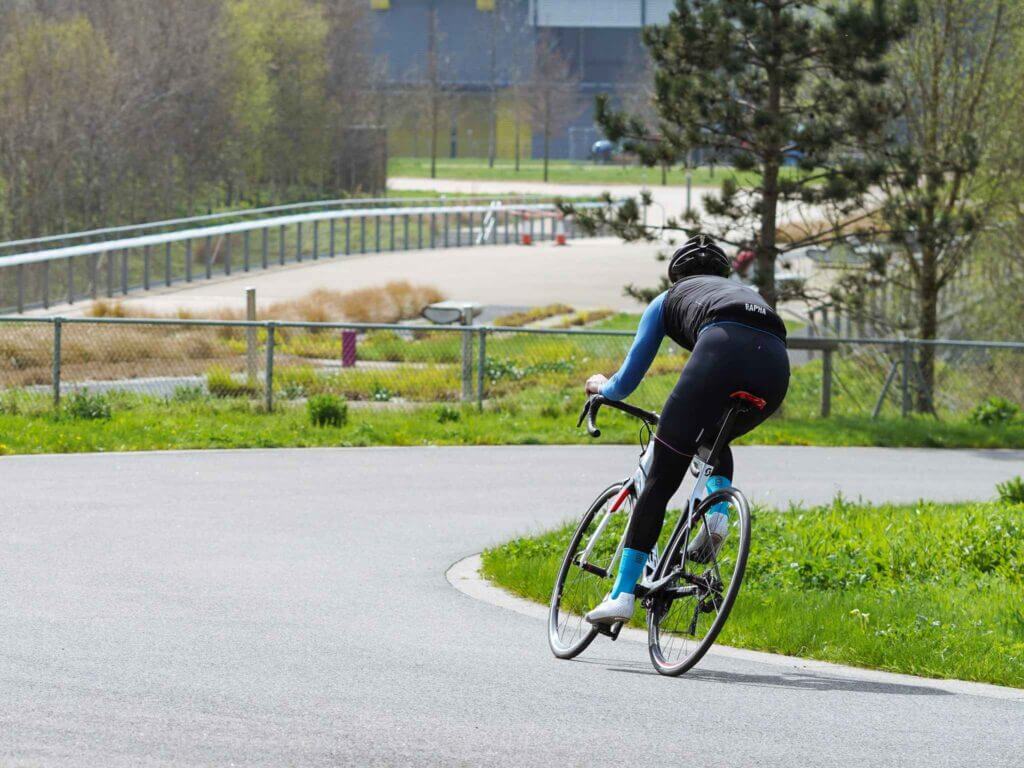
When it comes to conquering descents, your body position is your secret weapon. Achieving the perfect balance and agility is like dancing with gravity, and it starts by skillfully shifting your weight.
As you speed down, try shifting your weight a bit back. This helps you stay in control and steady. You’ll also want to bend your elbows a little – that helps you absorb any bumps or rough parts on the road.
Put your hands on the drops, the lower part of the handlebars where it curves down. This gives you extra power and control when you steer. You can also cover the brakes with one or two fingers.
When you’re going straight, your pedals should be in a neutral position parallel to the road, like they’re on a clock at three and nine o’clock.
Imagine your body as an extension of your bike. Your balanced position helps you stay steady and ready for anything that comes your way as you ride down the hill.
4. Slow Down Like a Pro
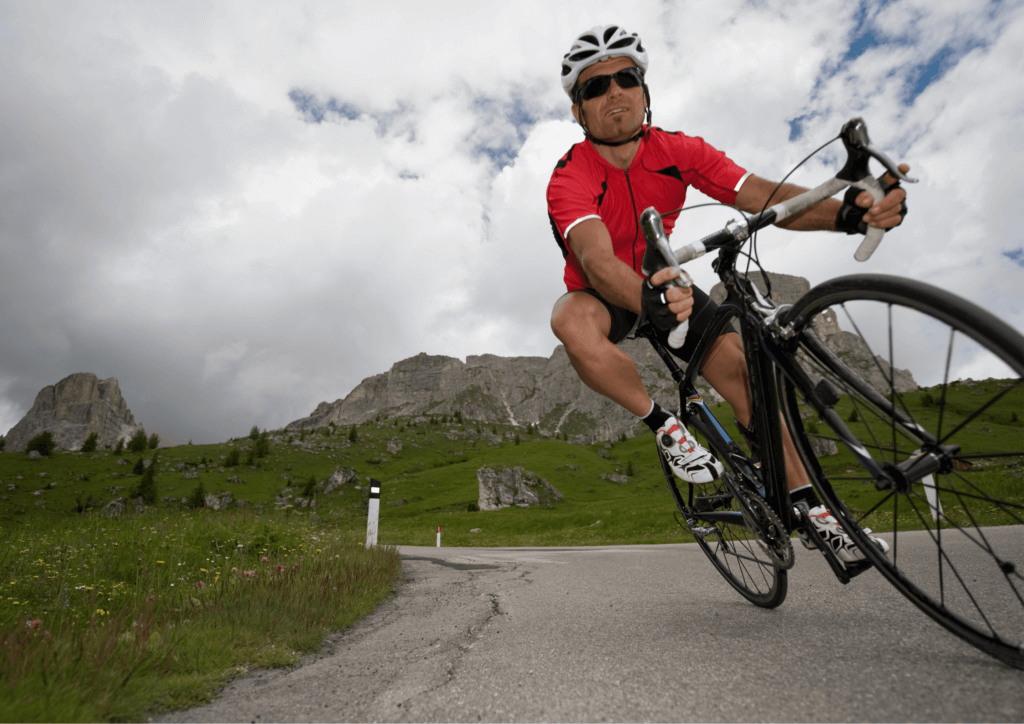
Riding downhill isn’t only about going super fast; it’s also about knowing how to slow down when you need to. Getting good at using your brakes while zooming downhill takes some careful moves.
Think of your brakes like your slowing down tools. You have brakes in the front and back, and using them together helps you slow down and stay in charge. Just remember, the front brake is the one that does most of the work in stopping.
When you’re getting ready to go downhill, start squeezing the brakes gently. Don’t grab them suddenly – that might make your bike skid and wobble, and that’s not what we want.
Instead, press the brakes gently to let them do their job smoothly. They’ll rub against the wheel slowly and help you slow down bit by bit. You’re not trying to stop suddenly; you’re just trying to stay in control.
Here’s a cool trick: sometimes let go of the brakes for a little while. This helps them cool down and work better. If you keep squeezing them all the time, they might get too hot and not work as well. So, give them a little break now and then, especially when you’re riding downhill for a long time.
You can also use your upper body to help you slow down a bit. If you sit up straighter, your body will catch more wind and create a sort of air brake. This extra drag will help you stay at a steady lower speed without having to use your brakes too much.
5. Take on Turns
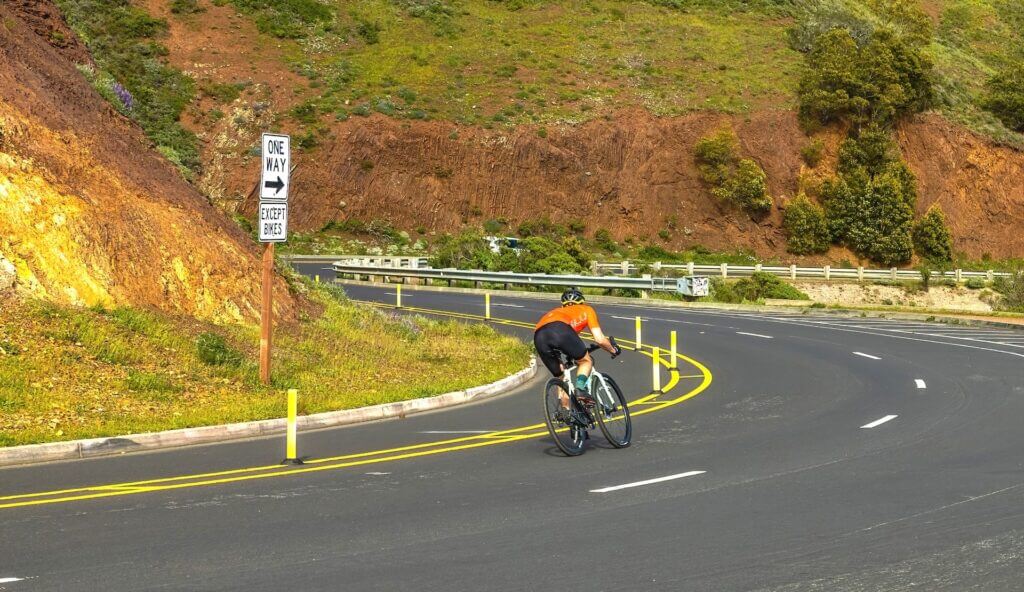
Sharp turns and corners add excitement to your descent, but they need some special skills. Handling these twists is about knowing how to do it and having strong belief in yourself.
Start by giving yourself plenty of room as you approach the turn. This lets you move your bike around and see where you’re going.
As you go into the turn, smoothly switch from the wide part to the tight part, so you’re right on target. Staying balanced is super important – it keeps you steady and in control.
Your body is like the center of a seesaw when you turn. Lean your bike and yourself together into the turn. This kind of leaning helps you stay on the right path, even when the road tries to push you away.
Keep your eyes on where you want to end up after the turn. Your bike will follow where you’re looking, helping you stay on track.
Controlling your speed while turning is a big deal. Start slowing down before you get to the turn, and let go of the brakes as you get closer to the middle of the turn. This way, you won’t suddenly go too fast or wobble. And when you’re done with the turn, you can speed up again.
6. Stay Relaxed

Descending isn’t just about technique; it’s also about feeling comfortable and relaxed as you glide downhill. Keeping your body loose and your mind calm can enhance your overall experience and control.
As you begin your descent, take a moment to notice any tension in your body. Relax your grip on the handlebars and let your arms and shoulders find a natural, comfortable position. When your upper body is relaxed, it becomes more responsive to the bike’s movements and the road’s twists and turns.
Being tense while descending can increase the chances of a speed wobble, where your bike starts to shake uncontrollably. By staying relaxed, you minimize the risk of triggering such wobbles and maintain a smoother, more stable descent.
Relaxing your grip on the handlebars also prevents excessive arm fatigue, allowing you to maintain better control and reaction time. Remember, the bike wants to follow the road naturally – you’re there to guide it, not force it.
As you become more skilled and relaxed, you’ll find that descending feels less like a battle and more like a flowing dance. Embrace the sensation of the wind rushing past you, the road unfolding beneath your wheels, and the joy of being in control while feeling completely at ease.
7. Build Confidence
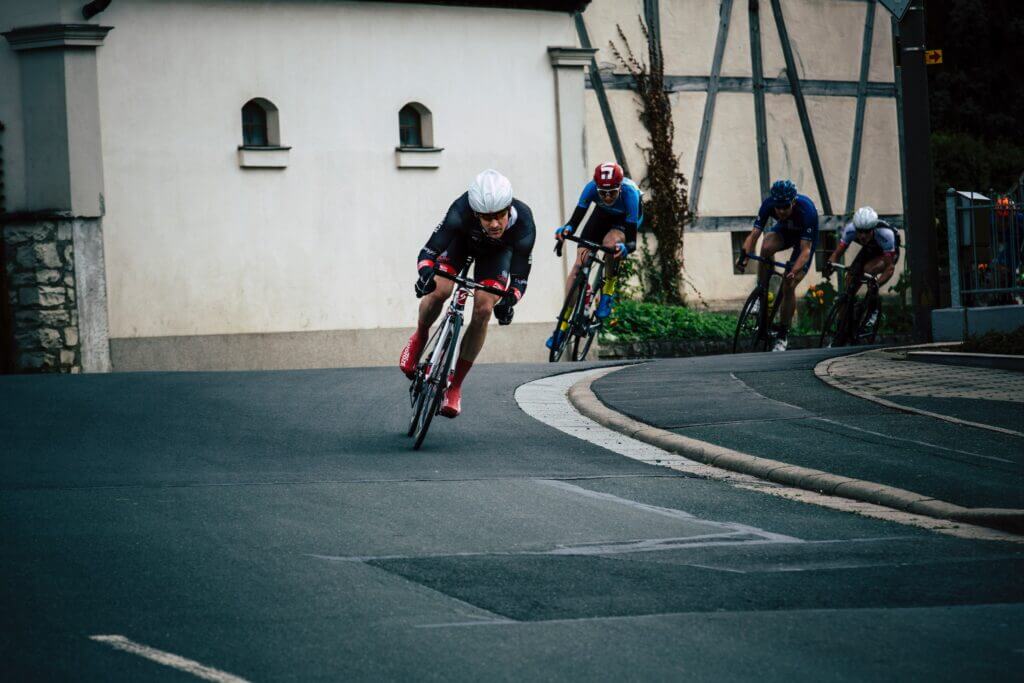
Downhill cycling isn’t just about your body – your mind plays a big role too. Building mental strength helps you stay focused and make quick decisions. Imagine yourself sailing down the hill smoothly before you start. This can help boost your confidence and ease any worries.
When you’re not sure, remind yourself of how much you’ve practiced and learned. Think about the times you’ve spent getting to know your bike and improving your skills. These experiences show how capable you are.
As you gain more experience, you’ll feel more sure of yourself. Try gradually taking on slightly tougher downhill challenges to push your limits in a safe way. This will help you grow and feel even more confident over time.
If you know someone who’s really good at going downhill, try riding just behind them. Watch what they do – how they move, when they slow down, and how they handle the bike. Keep some space so you can see well and have time to react. It’s like having a mentor right there on the road with you!
Remember, having a strong mind is just as important as having strong legs. By practicing mindfulness and building up your mental strength, you’ll find yourself tackling downhill sections with a new sense of courage and determination.
FAQ About descending
How do I overcome fear while descending?
Don’t worry, feeling scared is common, especially if you’re just starting out. To overcome this, pick routes you’re familiar with at first. If you can, ride with experienced cyclists – they can give you tips and show you the ropes. And remember, practice makes perfect. As you practice more, your fear will likely start to fade away.
Can I go downhill in the rain or wet conditions?
Riding downhill in wet weather can be more challenging because the road might be slippery. Make sure your brakes are working well before you start, and go a bit slower than usual. Be extra cautious on turns and when you’re braking – give yourself more time to stop.
How can I get better at turning corners?
Practice is the name of the game here. Start on paths that are safe and easy to ride. When you’re turning, look where you want to go – that helps you steer better. Lean your bike gently into the turn and keep your body in a comfy position. Over time, you’ll get the hang of it!
Should I use both brakes when going downhill?
Absolutely, using both brakes is a smart move. Remember, the front brake is the real stopper, helping you slow down faster. Try gently squeezing both brakes to get the hang of it.
Just a quick tip: if you ever need to stop completely, use the rear brake along with the front one. Avoid grabbing the brakes suddenly, especially the front one, while going downhill or turning. If you do, your bike could lock up, and that’s a recipe for a tumble. So, use your brakes wisely and stay safe!
What should I do if I get a speed wobble?
If you feel your bike wobbling side to side, it’s called a speed wobble. Stay calm and don’t panic. The first thing to do is stay relaxed – gripping the handlebars too tight can make it worse. Try to keep your upper body steady and avoid making sudden movements.
Next, gently press your knees against the bike frame. This helps stabilize the bike and can often help stop the wobble. Keep your eyes on where you want to go, and try to ride it out. Slowly ease off the brakes if you’re squeezing them, as this can sometimes trigger the wobble.
Remember, staying relaxed and using your knees to steady the bike can make a big difference in getting through a speed wobble safely.

